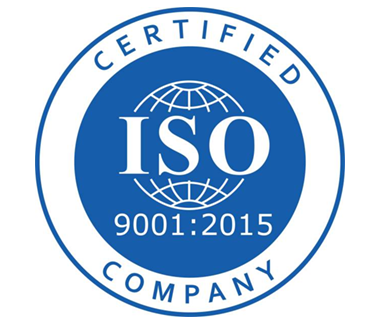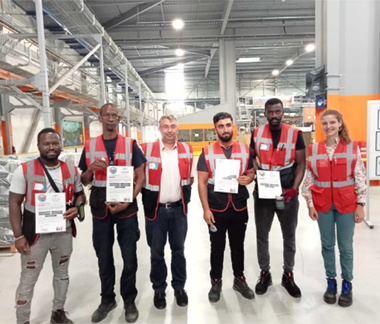Maintenance of industrial equipment
What is industrial maintenance in a logistics environment ?
Industrial maintenance is defined as all the methods and techniques for maintaining, optimising or restoring logistical production equipment and guaranteeing its correct operation. It plays an essential role in the productivity and profitability of a logistics warehouse by limiting breakdowns and therefore allowing production to continue without interruption.
Current supply chain practices recommend favouring intervention planning to test the mechanisms of industrial equipment during production, changing worn parts before they become obsolete or implementing a CMMS system.
What are the different types of infustrial maintenance ?
There are various types of industrial maintenance, which take place at different times during the activity.
> Corrective maintenance:
This allows specific parts of the equipment to be repaired with the aim of prolonging its correct operation. It is a provisional action that does not allow the breakdown to be repaired permanently.
> Curative maintenance:
His aims to repair breakdowns in depth. This concerns in particular the replacement of certain components in order to guarantee a durable repair.
> Preventive maintenance:
Carried out upstream of the failure, it aims to limit the risks of breakdown. It deals with components, spare parts, equipment and machines. This type of maintenance must take into account the manufacturers' requirements concerning the mechanical aspect as well as the uses of the machines by the users.
Within preventive maintenance, there are two types of maintenance:
🡪 Systematic maintenance works on the repetitiveness of interventions, in particular to change parts and allow for an improvement in productivity and machine operation;
🡪 Conditional maintenance monitors key machine indicators to allow technicians to intervene according to the actual condition of the equipment. With this system, it is possible to digitise the task with IT tools.
> Predictive maintenance:
This is carried out by means of tools connected to industrial equipment. They enable sensors to search for and detect potential anomalies that may occur.
For each type of maintenance, safety measures are put in place within companies. PPE and preventive measures are used to ensure the safe use of maintenance tools.
Levels of industrial maintenance
There are also different levels of industrial maintenance interventions ranging from 1 to 5, level 1 being able to be carried out by the user and levels 2 to 5 requiring the technical know-how of a maintenance technician.
They allow teams to judge the level of seriousness of the operation.
> Level 1: simple adjustments made to the machine by the user, without tools
> Level 2: minor preventive maintenance operations
> Level 3: breakdowns requiring a diagnosis linked to specific adjustments
> Level 4: more important renovation or restructuring work on equipment
> Level 5: more extensive repair work
Roles in the industrial maintenance sector
> Maintenance technician
An essential function in the industrial maintenance activity, the technician is on the front line during planned or emergency interventions on machines.
Qualified to repair parts on a case-by-case basis, a technician's days are varied and depend on the smooth running of industrial equipment and machinery.
> Maintenance supervisor
The supervisor generally has more experience and aims to manage the team of technicians. He/she plans and manages preventive maintenance interventions and sets priorities during breakdowns.
> Maintenance engineer
In charge of designing and implementing industrial maintenance plans, the maintenance engineer must have a broader vision of the activity. He/she designs and imagines optimisations of equipment with a view to improving their technical and technological functioning.
What are the innovations in the maintenance sector ?
As mentioned above, industrialisation continues to rise, and industrial environments require ever more innovative equipment. The role of maintenance is now essential in limiting breakdowns on equipment in logistics environments and technological developments are helping to develop new practices.
Industrial innovations have made it possible to improve the efficiency of interventions and to plan technician assignments more easily.
New tools have also emerged for remote monitoring of machines, sending alerts in the event of anomalies, providing accurate data on the health of equipment as well as on its performance.
What studies are needed to work in the maintenance sector ?
Depending on the role you want to perform in industrial maintenance, there are various possible study paths.
To become an industrial maintenance technician, you generally need to have a BAC+2 level. Upstream, various routes are open, via a "CAP (vocational training certificate) for maintenance in the building materials and related industries" and then towards a "Bac Professionnel (vocational baccalaureate) in industrial equipment maintenance".
The easiest way to become a maintenance technician after the CAP and Bac Professionnel is to go on to a DUT or BTS in order to do work placements. These will enable you to gain initial experience in the industrial sector as well as the skills that are essential for working in the field.
In order to more easily envisage a move towards a managerial position, studies can be continued in a professional degree specialising in industrial maintenance.
Beyond these profiles, engineering schools can also be integrated in order to consider industrial maintenance engineering positions.
The constant evolution of the industrial world pushes the maintenance sector to recruit regularly, and many jobs are to be filled in the various existing positions.







